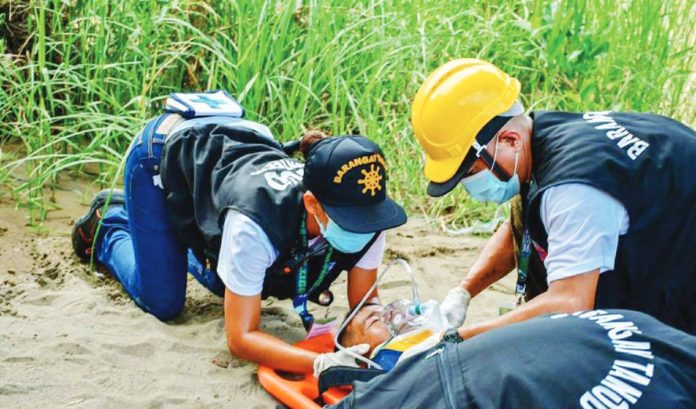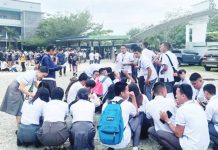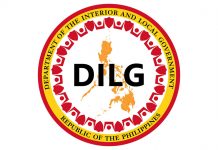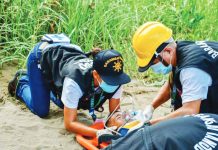
ILOILO – From the coasts of Leganes to the uplands of Sta. Barbara, barangay disaster risk reduction teams across Iloilo are taking the lead in community-based disaster preparedness — proving that resilience begins at the grassroots.
The Iloilo Provincial Disaster Risk Reduction and Management Office (PDRRMO) confirmed that these barangay-level units are now “fully functional and activated” to respond during emergencies, following extensive coordination, training, and capability-building efforts.
Joerey Porras, supervisor of the PDRRMO’s Operations Center, underscored the vital role of the smallest government units in crisis response.
“We monitor each barangay’s readiness, but primary oversight lies with the municipal level, which in turn oversees the barangays,” he said, emphasizing the importance of a well-structured monitoring system to ensure swift and coordinated action.
Each barangay is allocated a calamity fund based on its Internal Revenue Allotment (IRA). While municipalities can step in when challenges become overwhelming, Porras said the goal is to empower barangays to act independently.
“The types of training depend on the unique requirements of the barangay. Often, the local captain decides which areas to focus on,” he added.
Training at the Core
Porras explained that barangay tanods—often the first responders during typhoons, fires, or earthquakes—undergo continuous training in first aid, fire safety, and flood management.
“Training sessions are not one-off events. We encourage regular refresher courses to ensure preparedness remains at the forefront of their skills,” he said.
Provincial Board Member Rolando Distura, chair of the Sangguniang Panlalawigan Committee on Disaster Risk Reduction and Management, said activating barangay disaster councils is key to saving lives and property.
“Our barangay disaster risk coordinating councils work closely with local government units (LGUs) to align their programs and resources,” Distura said.
He also stressed the importance of visible and practical tools in risk management, recalling an initiative from his time as mayor.
“When the community sees that the markers indicate a possible flood, they are prepared and know how to respond appropriately,” he said.
He added that training “begins at the community level and extends to schools, ensuring that everyone knows their role when disaster strikes.”
Barangay Champions of Preparedness
In Pavia, Barangay Tigum has become a model of readiness, with its Barangay Peacekeeping Action Team composed of 18 tanods and three volunteers from the Sangguniang Kabataan and the barangay administration.
“Our responders here are the barangay tanods. The training they receive is from the MDRRMO, the police, and fire responders. We conduct training every year, sometimes inviting the fire department or police, while other times, we take the lead in inviting them to train us,” said Barangay Captain Ferdinand Guillem.
Barangay Tigum’s dedication paid off when it bagged Rank 1 in the 2025 Search for Outstanding Barangay Tanod under the 1st–3rd Class Municipalities category. The barangay will represent Iloilo in the regional competition later this year.
Guillem said the tanods meet every first Monday of the month to discuss peace and order, disaster preparedness, sanitation campaigns, and their participation in community events.
Expanding Training Even in Low-Risk Areas
Even barangays not prone to flooding, such as Duyanduyan in Sta. Barbara, are investing in preparedness. Barangay Kagawad Jassel Comodo said their 13 active tanods are undergoing training under PDRRMO and are requesting more.
“We are just getting started and have submitted a letter of invitation. Our chief Tanod has received training, but others have not undergone much training yet… We also want to include our Brgy. Health Workers (BHW) in the training,” Comodo said.
Barangay Secretary Inde C. Faguimit added that elevation is no reason for complacency.
“Although our area is not prone to flooding and is at a higher elevation, it is still better for our Tanods and BHW to receive training in first aid and disaster response,” she said. “We have also first aid kits,” she added.
Women Leading Disaster Readiness
In Leganes, Barangay Poblacion’s disaster volunteer team is led by Jane P. Jaleco, a Barangay Nutrition Scholar who doubles as the head of their six-member DRRM unit.
“Our team… undergoes comprehensive training under the Disaster Risk Reduction and Management (DRRM) framework. We have completed Basic Life Support (BLS) training. Additionally, we hold refresher courses every year specifically focused on disaster risk management,” Jaleco said.
She added that their MDRRM office houses emergency equipment and hazard maps.
“In the event of a disaster, our team, along with the tanods, monitors the situation and conducts roving patrols… operating 24/7,” Jaleco noted.
They also coordinate with provincial agencies, including the Provincial Health Office, for health-related response training.
Grassroots Resilience
Across Iloilo, these initiatives highlight the shift toward localized and inclusive disaster management—anchored on empowerment, coordination, and sustained training.
As Board Member Distura put it, “By equipping barangays with the right tools and knowledge, we are fostering a culture of preparedness that empowers communities to take charge of their safety.”/PN





